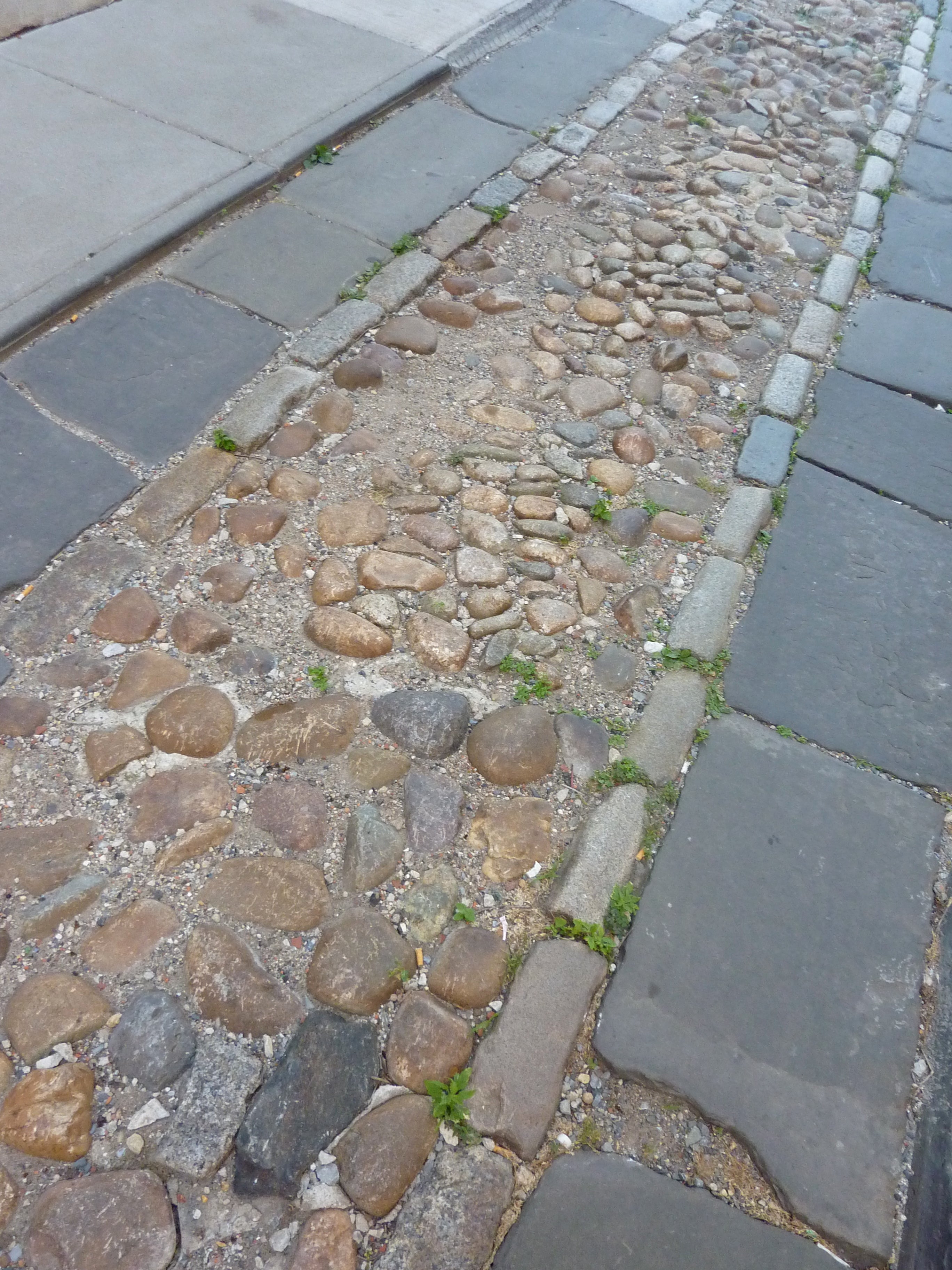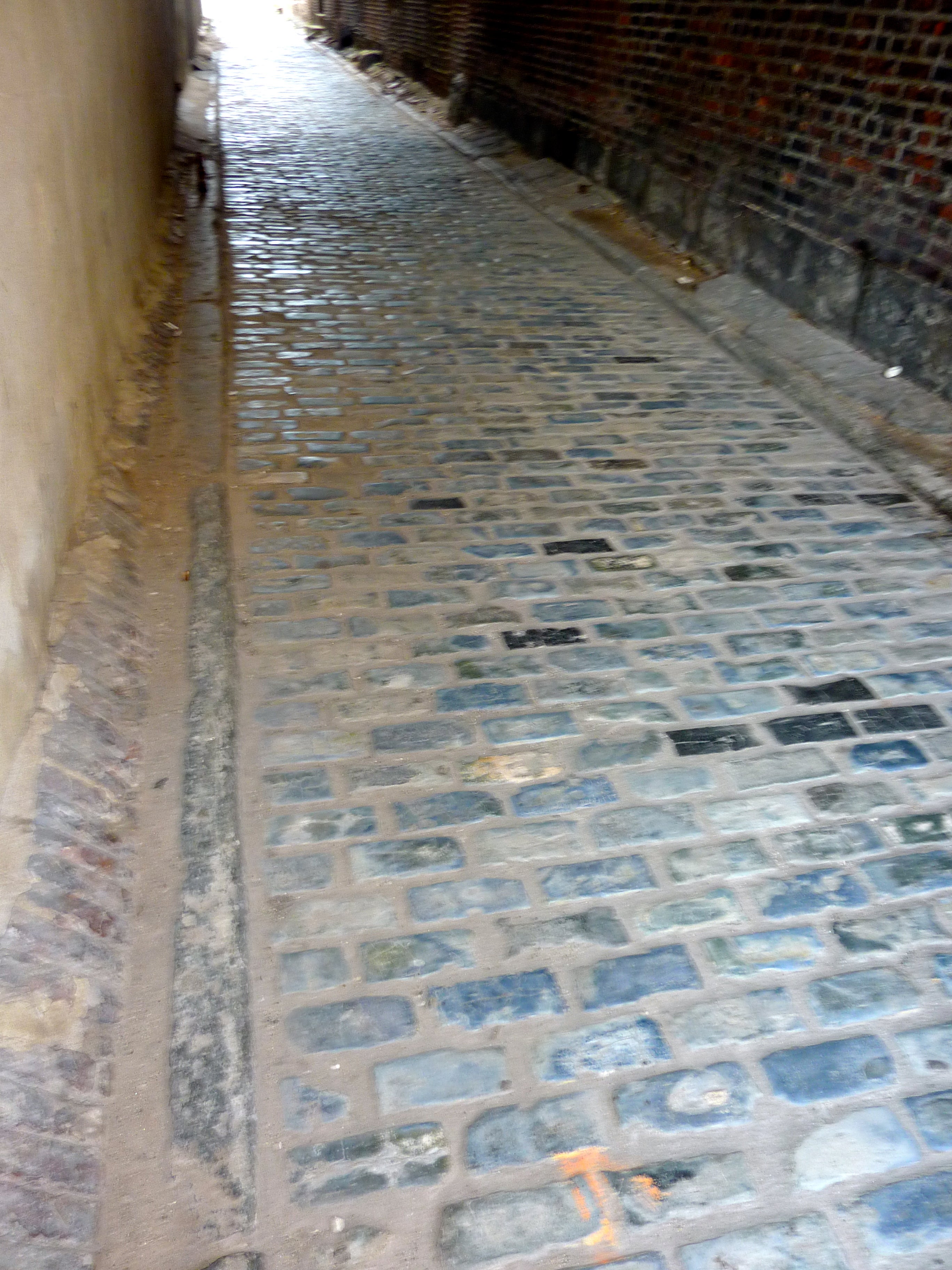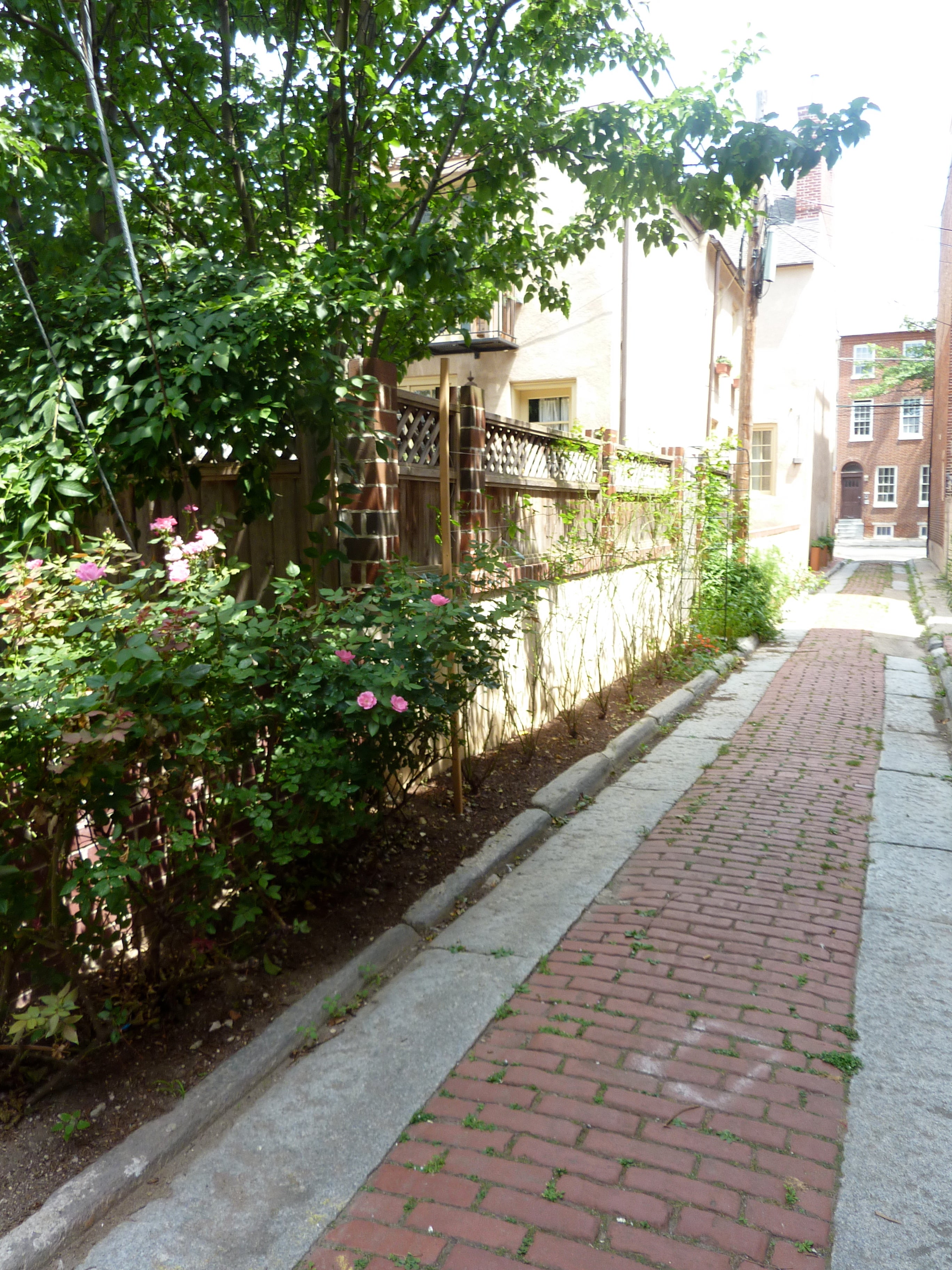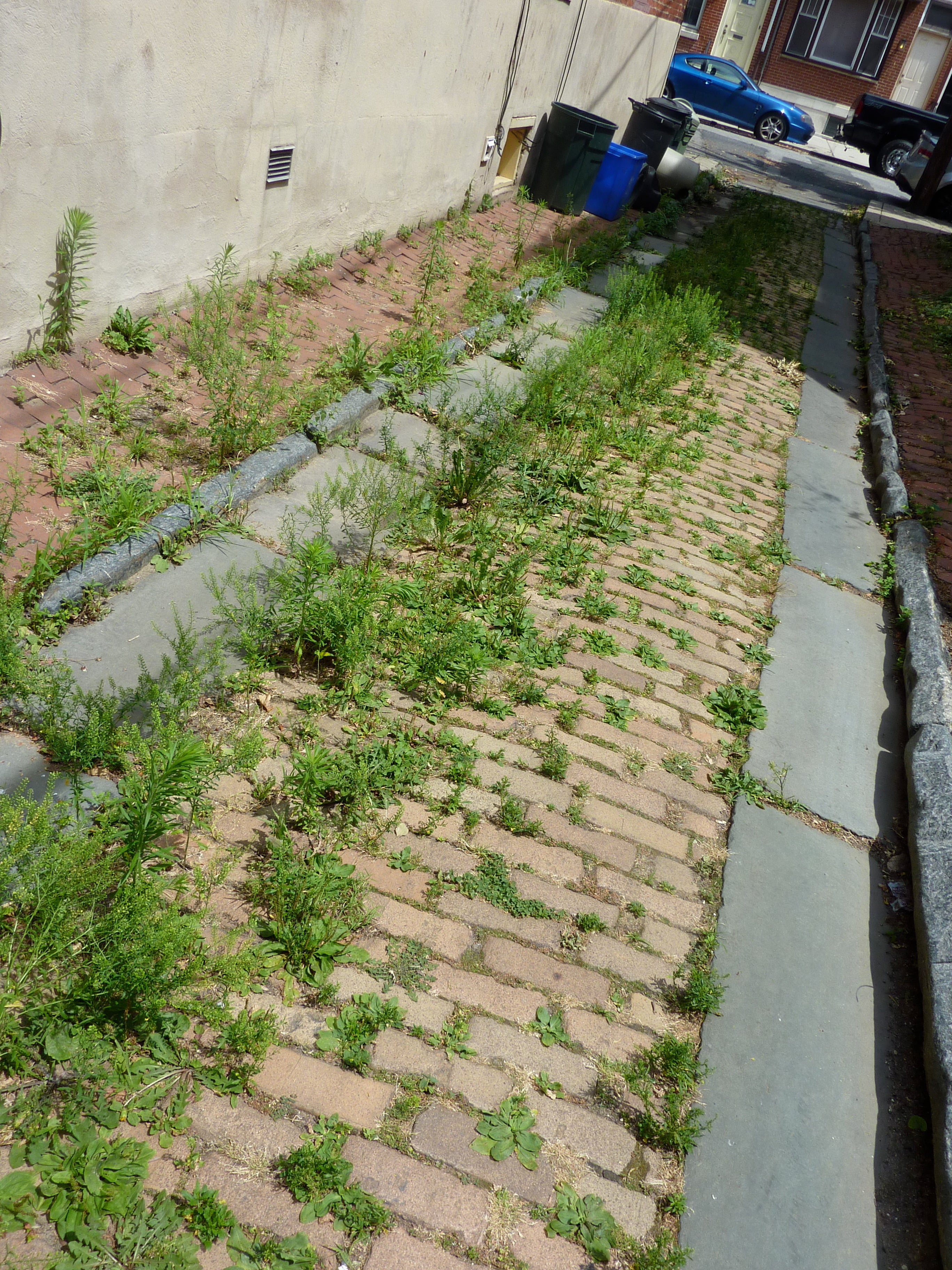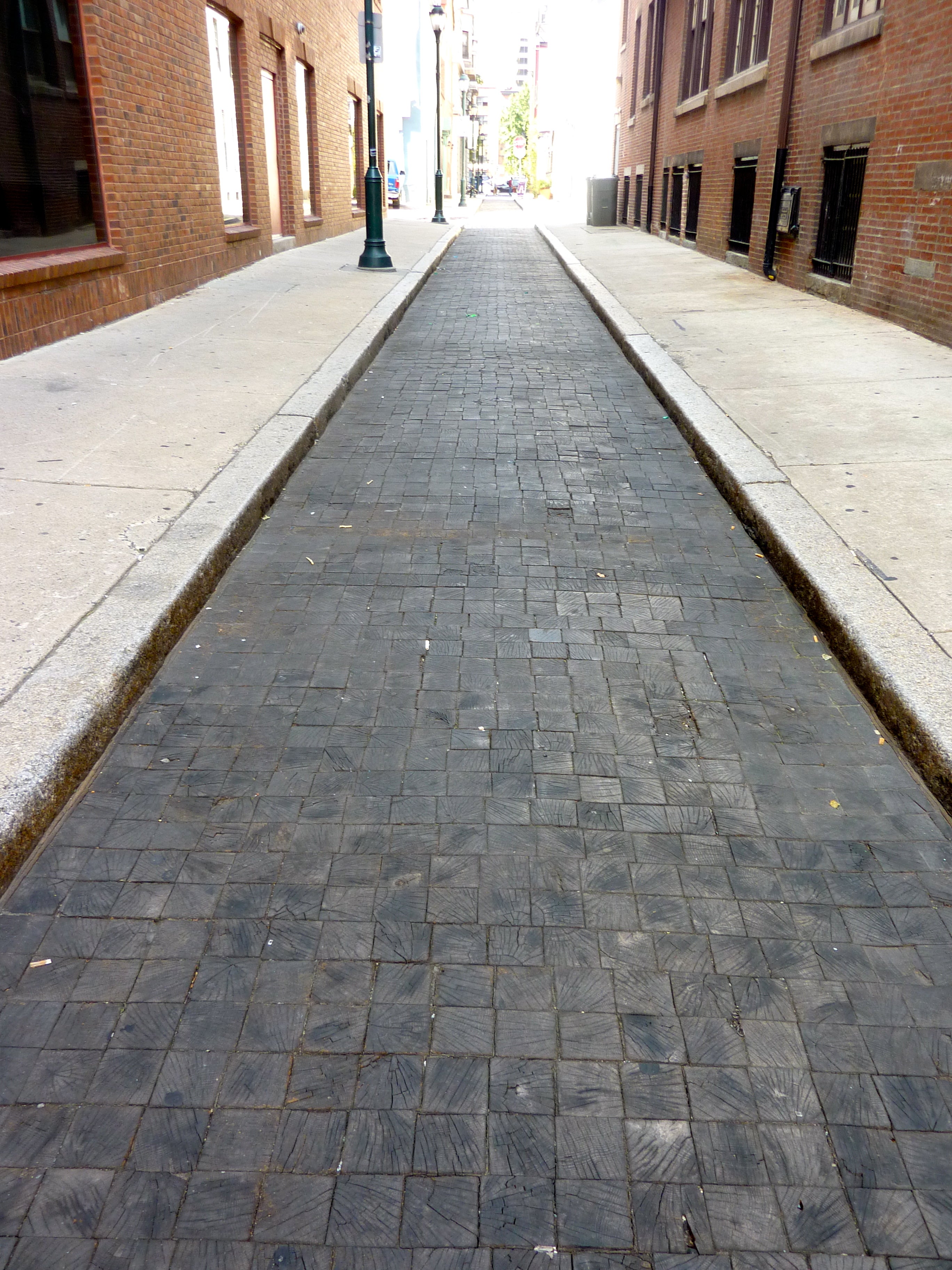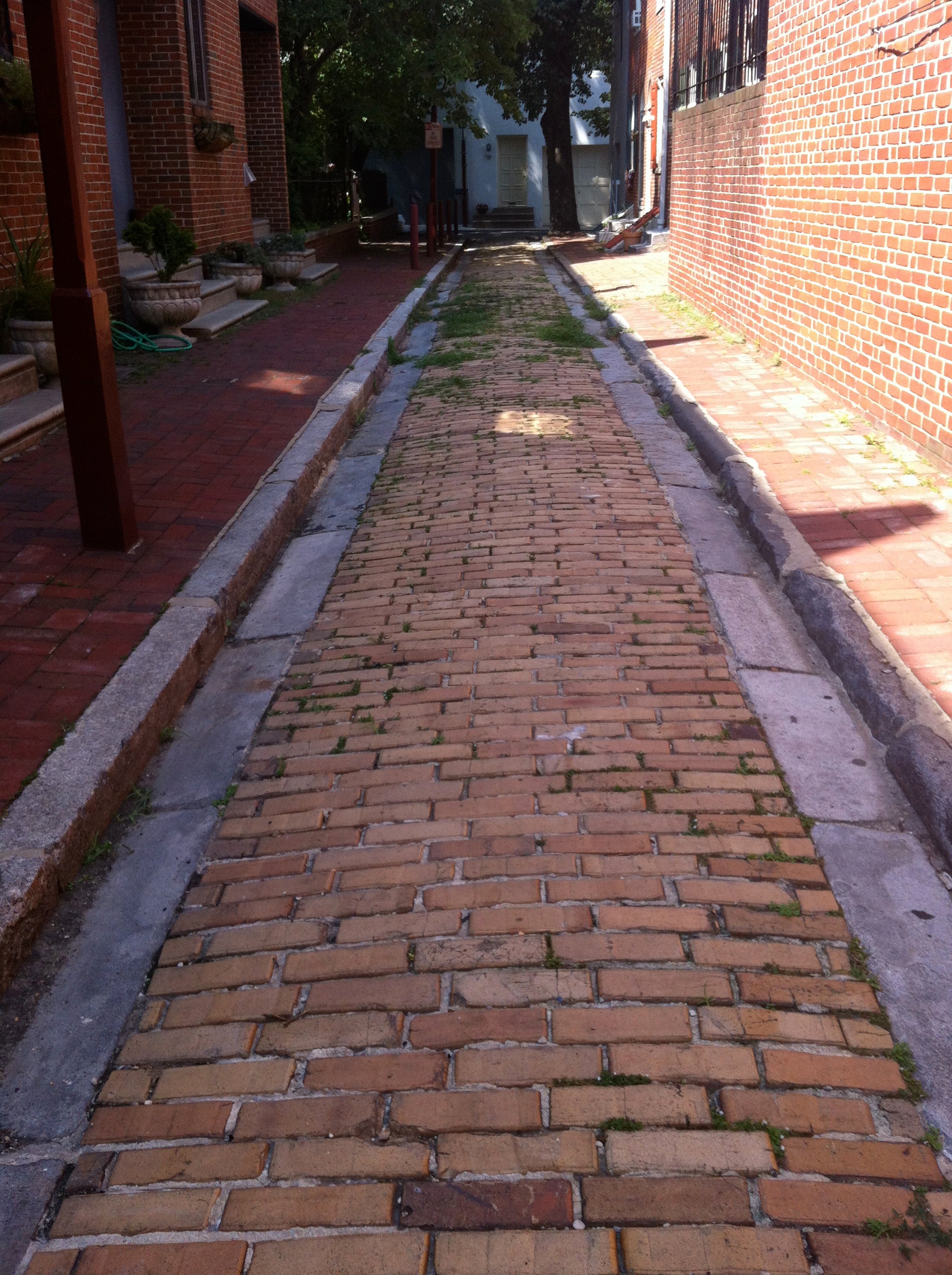Look Down! Historic street paving thematic district
As I walked down a tattered little portion of Alter Street in Pennsport, I suddenly heard a window screech open. “I hope you’re not going to pull up more of the street,” a woman called down, watching in dismay as I snapped photos.
“We’d really like to keep the rest of the blue granite,” she continued, almost pleadingly. Assuming I was from the City, she pointed to the patches of asphalt that already marked the street in front of each house. The work offered a clear indication that sewer service is being updated.
This unassuming street is just one of nine that feature the beautiful glazed blue granite block — it almost looks like Wedgwood porcelain. They also appear on Waverly Street.
The most intact version is found in Old City, a happy treasure tucked under the covered walkway of Filbert street between 2d and 3rd. “That one is my favorite historic streetscape in the entire city,” observes Jonathan Farnham, executive director of the Philadelphia Historical Commission, which created a special thematic district for the city’s historic streets in 1998.
All told, about 330 streets are listed under the designation. They spill from large swaths of Germantown Avenue to tucked away alleys and Washington Square West “little streets”. As with the Alter Street block, many have been tampered with at least to some degree, thanks to the vagaries of plumbing and repair needs, and safety and ADA requirements.
According to the newly-formed Philadelphia Society of Small Streets, an independent consortium of neighbors looking to work with the Historical Commission and other city agencies, the city allots about $200,000 per year to repair historic streets. The Society has called for old granite curbs to be protected, as well; and for the elimination of concrete or asphalt repair patches.
Although the Streets Department generally alerts the Commission to upcoming work, it is not required to do so by the historic protection ordinance, according to Farnham. “We rely on the department’s sense of history,” he says. Additionally, state routes — such as portions of Germantown Avenue — and a handful of privately-held streets can complicate repair jobs. Residents, too, sometimes take matters into their own hands.
“The rule is, of course, that what you take up, you put back,” says Farnham. “And anything that is damaged in removal needs to be replaced with materials that match wherever possible.” The city has a huge stockpile of Belgian granite block, he says, but some materials, such as the glazed blue granite, are finite.
Cobblestone, the oldest and at one point the most common cartway material, survives on just seven streets. Two other short-lived experimental materials, wood block and bluestone slabs, exist on just one street each. The famous wood blocks on the 200 block of South Camac Street are reproductions; the bluestone slab is laid down on the private mews of the so-called English Village, a 1928 development in the 2100 block of St. James Pl.
Overall, basic gray Belgian block accounts for 68 percent of the certified streets. Red brick streets comprise 25 percent of the total, with yellow and orange brick covering just eleven blocks throughout the city.
They’re all easily overlooked — but easy to love once you start paying attention to them. “The great thing about them is that they really complete a historic streetscape,” says Farnham.
Contact the reporter at jgreco@planphilly.com and follow her on Twitter @joanngreco
WHYY is your source for fact-based, in-depth journalism and information. As a nonprofit organization, we rely on financial support from readers like you. Please give today.



